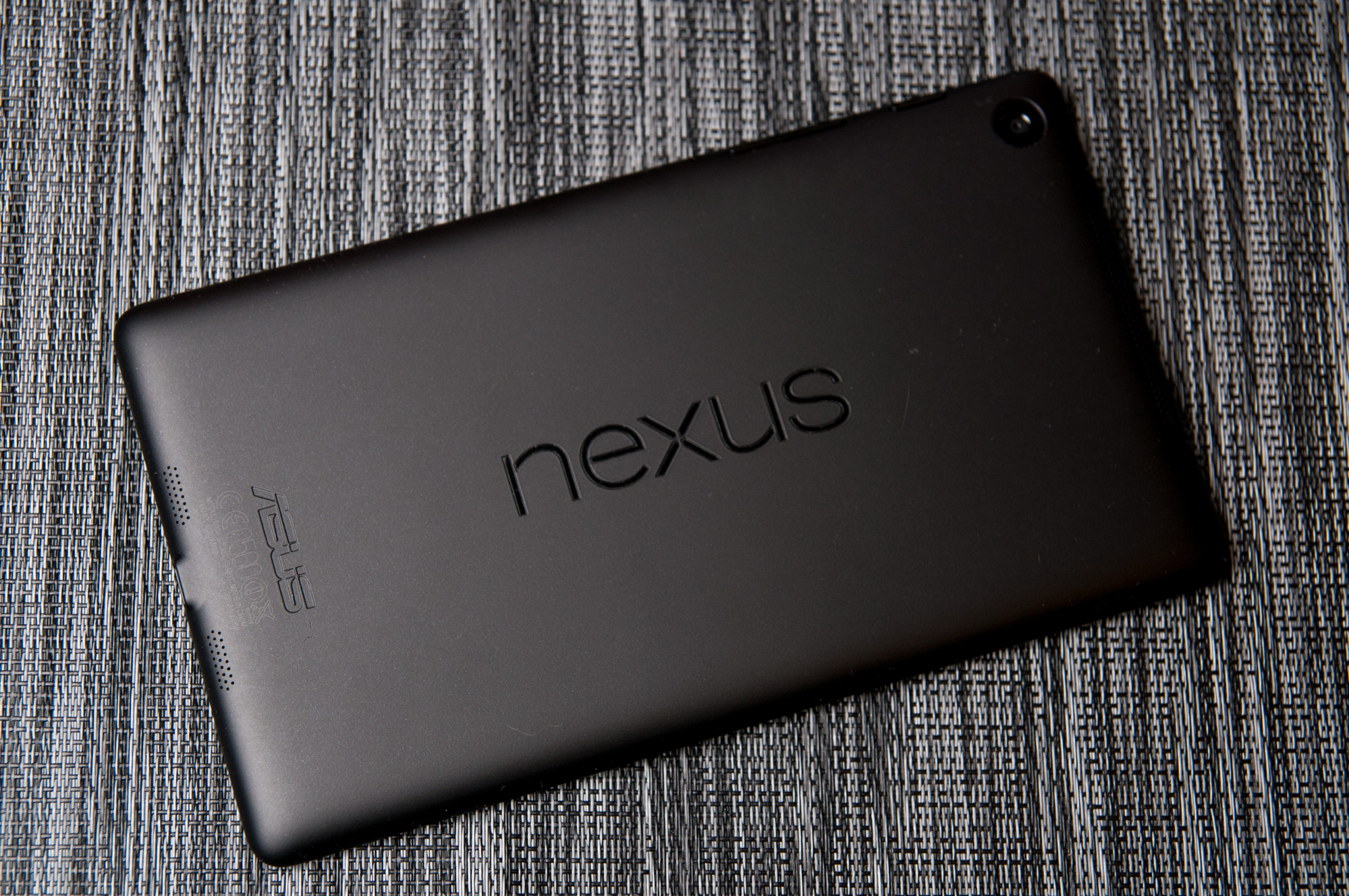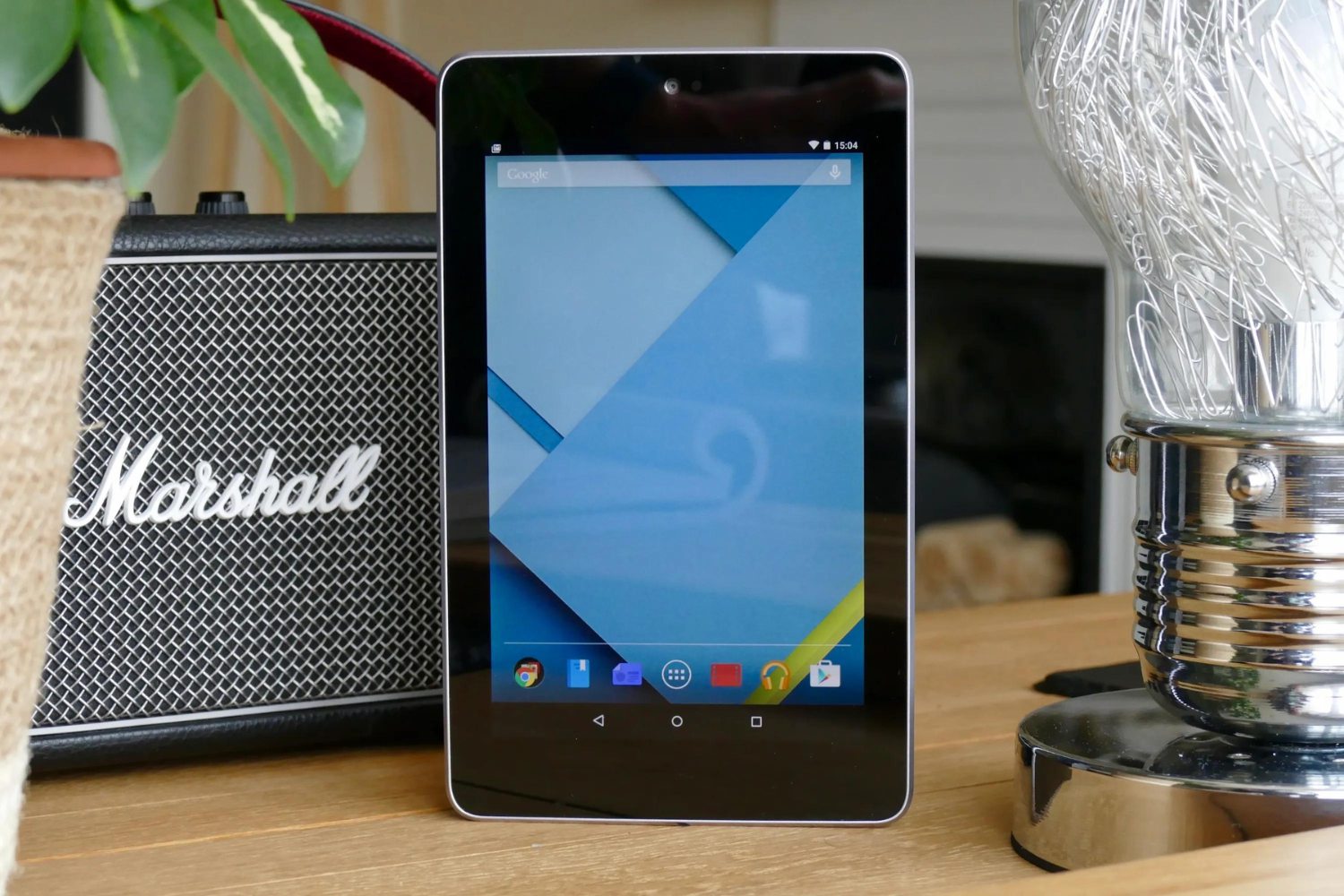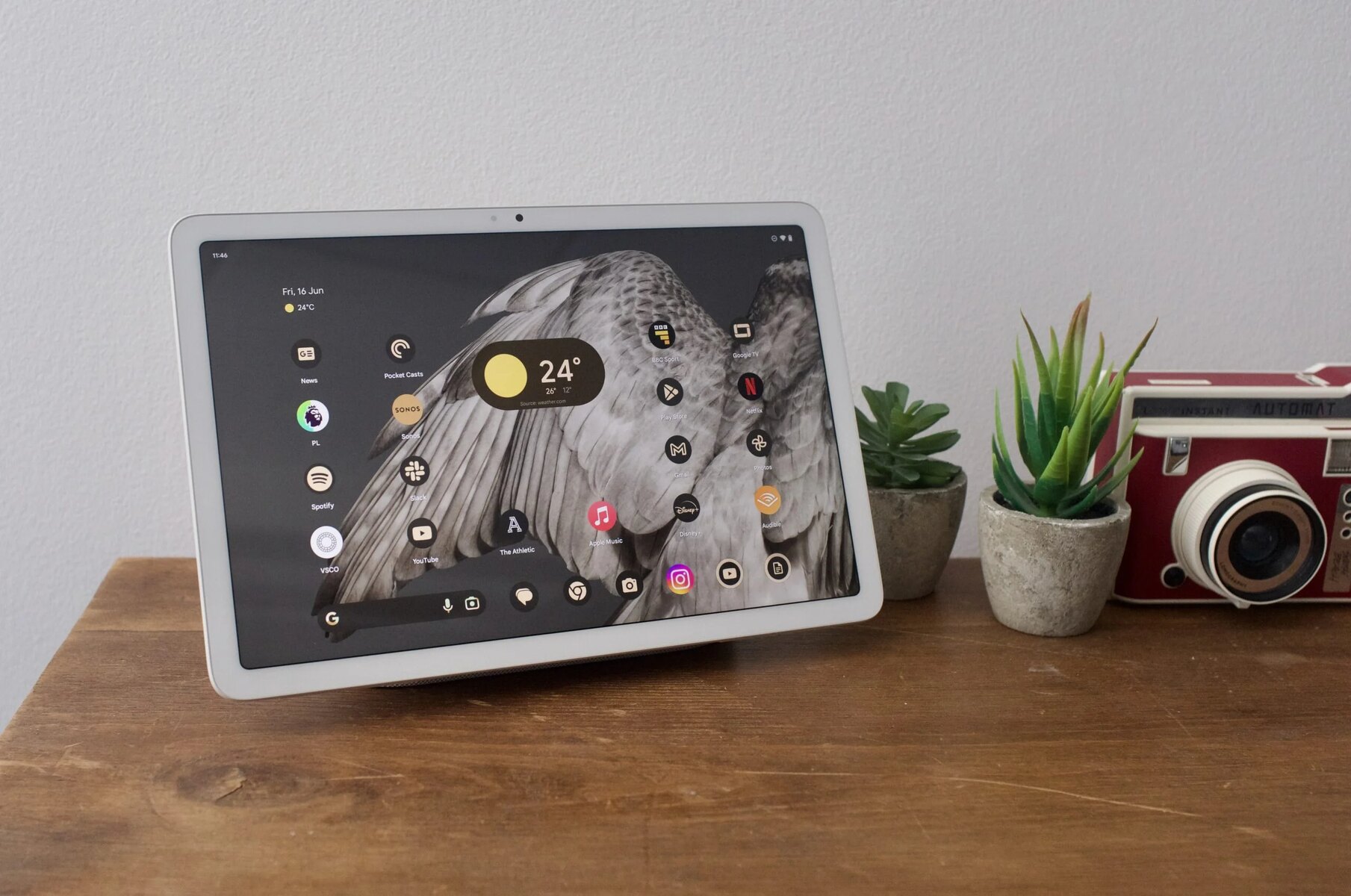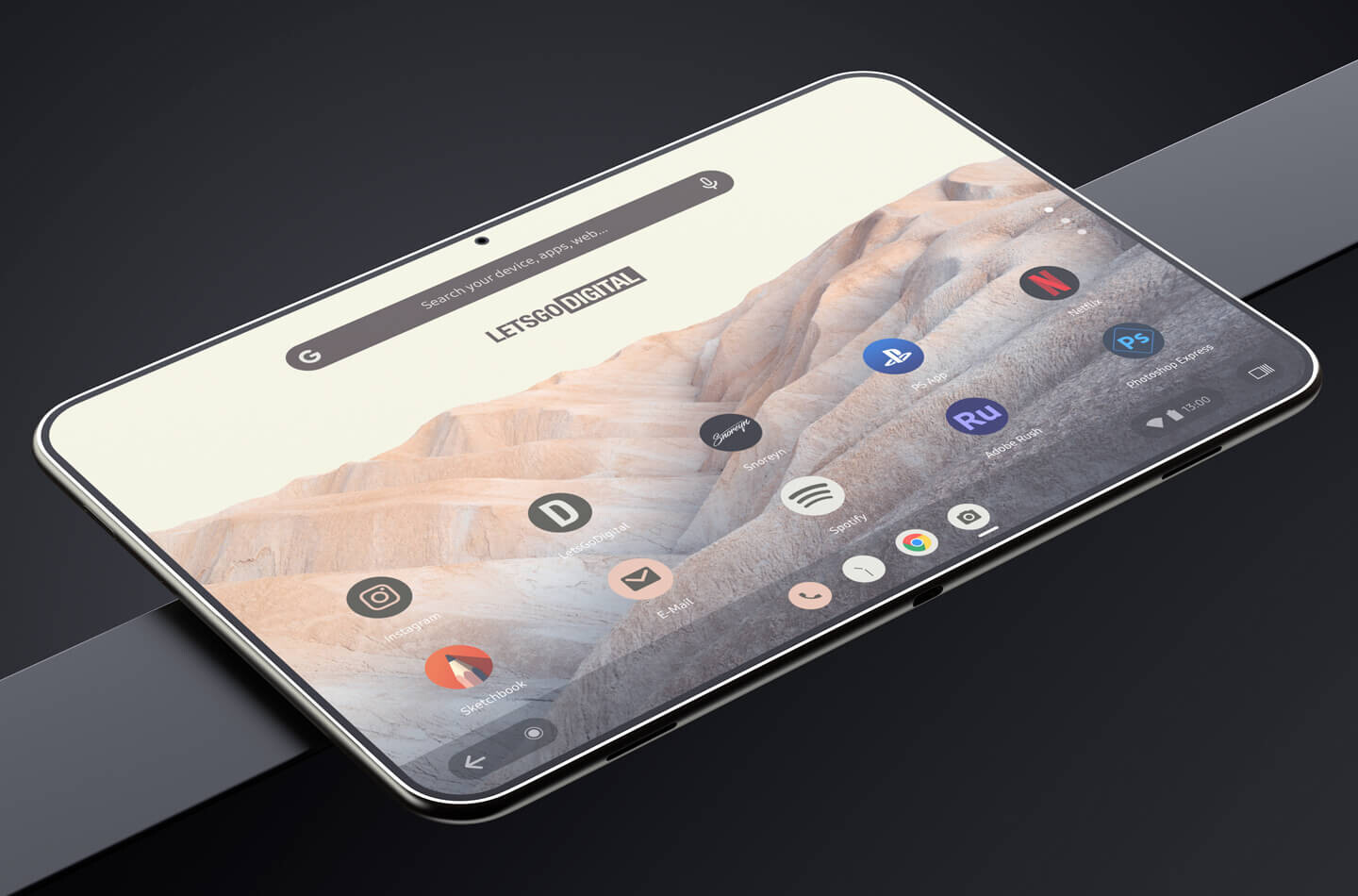Introduction
Updating your Nexus 7 tablet is essential to ensure that you have the latest features, bug fixes, and security enhancements. Whether you are a tech-savvy individual or a casual user, keeping your tablet up-to-date is crucial for optimal performance and compatibility with the latest apps and software.
Updating your Nexus 7 tablet is a relatively straightforward process, but it’s important to follow the right steps to ensure a smooth and successful update. In this article, we will guide you through the process of updating your Nexus 7 tablet, from backing up your data to installing software updates.
Before diving into the update process, it’s worth mentioning that Nexus 7 tablets run on the Android operating system. Android is known for its versatility, user-friendly interface, and constant updates from Google. These updates can include improvements to performance, new features, security patches, and more. By regularly updating your Nexus 7 tablet, you can take full advantage of these enhancements.
Before you begin the update process, make sure you have a stable internet connection and your tablet has sufficient battery power. It’s also recommended to back up your important data to prevent any potential loss during the update process. Additionally, it’s always a good idea to check for updates from the Settings menu to see if any updates are available for your Nexus 7 tablet.
In the following sections, we will outline the steps you need to take to update your Nexus 7 tablet. From checking for updates to installing them and restarting your tablet, we’ve got you covered. So, let’s get started and ensure that your Nexus 7 tablet is up-to-date with the latest software!
Backup Your Data
Before embarking on the journey of updating your Nexus 7 tablet, it’s crucial to ensure the safety of your data. While the update process is generally smooth, there is always a slim chance of unforeseen issues that could result in data loss. By taking a few moments to back up your important files, photos, and documents, you can have peace of mind knowing that your data is secure.
There are various methods available to back up your data on the Nexus 7 tablet. One of the simplest ways is to use Google’s built-in backup feature. This feature allows you to sync your apps, contacts, calendar, and settings to your Google account. To enable this, go to the “Settings” menu on your tablet, select “Backup & reset,” then ensure the “Backup my data” option is enabled.
Additionally, if you have personal files, photos, or videos that you want to back up, you can connect your Nexus 7 tablet to a computer using a USB cable. Once connected, you can access your tablet’s storage like any other external drive and manually copy the files to your computer’s hard drive or cloud storage service.
If you prefer a more comprehensive backup solution, you can consider using third-party apps or services. There are several reliable backup apps available on the Google Play Store that allow you to create a complete backup of your Nexus 7 tablet, including apps, settings, and media files. These apps often provide additional features such as scheduled backups and the ability to restore your data on a new device.
Remember, the backup process may take some time, depending on the amount of data you have on your Nexus 7 tablet. It’s important to ensure that your tablet is connected to a stable power source or has sufficient battery charge during the backup process to avoid any interruption.
Once you have successfully backed up your data, you can proceed with confidence to the next steps of updating your Nexus 7 tablet. By taking the time to back up your important files and documents, you are safeguarding yourself against any potential data loss during the update process.
Check for Updates
After ensuring your data is backed up, the next step in updating your Nexus 7 tablet is to check for any available updates. Google regularly releases software updates for the Android operating system, which includes performance enhancements, bug fixes, and security patches.
Checking for updates on your Nexus 7 tablet is a simple process. Start by opening the “Settings” app on your tablet and scroll down until you find the “System” or “About Tablet” option. Tap on it to access the system settings menu.
Within the system settings menu, you should see an option labeled “System Updates” or something similar. Tap on it, and your tablet will begin checking for available updates. If an update is detected, you will be prompted to download and install it. Make sure you have a stable internet connection, as system updates can be large in size.
It’s important to note that the availability of updates may vary depending on the age and model of your Nexus 7 tablet. While Google typically provides updates for a few years after a device’s release, older models may not receive the latest software updates. However, it’s still recommended to check for updates regularly to ensure you have the most up-to-date software version.
If your tablet detects an available update, follow the on-screen prompts to download and install it. During the update process, your Nexus 7 tablet may restart multiple times, and it’s important to let it complete the installation without interruption. The duration of the update process can vary, so it’s advisable to have a fully charged battery or keep your tablet connected to a power source.
Once the update is successfully installed, your Nexus 7 tablet will be running on the latest software version, equipped with performance enhancements, bug fixes, and the latest security patches.
Checking for updates regularly ensures that your Nexus 7 tablet stays up-to-date with the latest features and improvements. By keeping your tablet’s software current, you can enjoy a smoother and more secure user experience.
Connect to Wi-Fi
To successfully update your Nexus 7 tablet, it’s crucial to connect to a stable Wi-Fi network. Most software updates for the Nexus 7 require a reliable internet connection to download and install the necessary files.
To connect to Wi-Fi on your Nexus 7 tablet, follow these steps:
- Swipe down from the top of the screen to open the notification shade.
- Tap on the Wi-Fi icon to enable Wi-Fi if it’s not already turned on.
- Your tablet will start scanning for available Wi-Fi networks. Wait for the list of networks to populate.
- Select the desired Wi-Fi network from the list.
- If the network requires a password, enter it when prompted.
- Tap on “Connect” to establish a connection to the Wi-Fi network.
Once connected to Wi-Fi, your Nexus 7 tablet will have a reliable and fast internet connection necessary for downloading and installing software updates. It’s important to ensure that you are connected to a network with a stable internet connection to avoid any interruptions during the update process.
If you are unable to connect to a Wi-Fi network, you can also choose to update your Nexus 7 tablet using mobile data. However, it’s essential to be aware of the potential data charges involved, as software updates can be large in size. It’s recommended to have an unlimited or sufficient data plan if you choose to update your tablet using mobile data.
Once your Nexus 7 tablet is connected to Wi-Fi, you are ready to proceed with the next steps of the update process. Having a reliable and stable internet connection ensures a fast and seamless update experience, allowing you to take full advantage of the latest features and enhancements on your Nexus 7 tablet.
Charge Your Tablet
Before proceeding with the update process on your Nexus 7 tablet, it’s essential to ensure that it has sufficient battery charge. Updating the software on your tablet can be a time-consuming process, and having a fully charged battery or keeping your tablet connected to a power source is crucial to prevent any interruptions or potential issues.
To charge your Nexus 7 tablet, follow these steps:
- Locate the USB charger that came with your tablet or any compatible USB charger.
- Insert the USB end of the charger into the charging port on your Nexus 7 tablet.
- Connect the other end of the charger into a power outlet.
- Once connected, you will see a charging icon on the screen, indicating that your tablet is charging.
- Allow your tablet to charge until it reaches a sufficient battery level.
It’s recommended to charge your Nexus 7 tablet to at least 50% battery level before initiating the software update. This ensures that your tablet has enough power to complete the update process without running out of battery.
If you are unable to charge your tablet at the moment, make sure it has enough battery charge to last through the update process. Avoid starting the update when your tablet has less than 20% battery charge to avoid any potential issues or interruptions during the update.
During the update process, your Nexus 7 tablet may restart multiple times and consume additional power. Keeping it connected to a power source ensures that it remains powered throughout the update, reducing the risk of any complications or data loss.
By ensuring your Nexus 7 tablet is adequately charged or connected to a power source, you are taking the necessary precautions to ensure a smooth and uninterrupted update process. Once you have confirmed that your tablet has enough battery charge, you can proceed with confidence to the next steps of the update process.
Install Software Updates
Now that you have taken the necessary precautions to backup your data, checked for updates, connected to a Wi-Fi network, and ensured your Nexus 7 tablet is adequately charged, it’s time to install the software updates.
When a software update is available for your Nexus 7 tablet, you will receive a notification prompting you to download and install it. Follow these steps to install the software updates:
- Ensure your tablet is connected to a stable Wi-Fi network.
- Open the “Settings” app on your Nexus 7 tablet.
- Scroll down and tap on the “System” or “About Tablet” option.
- Tap on the “System Updates” or similar option.
- If an update is available, you will see a prompt to download and install it. Tap on “Download” or “Install” to proceed.
- Wait for the update to download and follow the on-screen instructions to install it. Your tablet may restart several times during the installation process.
- Once the update is installed, your Nexus 7 tablet will reboot and be updated to the latest software version.
It’s important to note that the time taken to download and install software updates can vary. The size of the update, the speed of your Wi-Fi connection, and the processing power of your tablet can all impact the duration of the update. It is advisable to have a stable internet connection and allow ample time for the update to complete without interruption.
While the update is in progress, it’s important not to power off your tablet or interrupt the installation process. Doing so can potentially lead to software corruption or incomplete installation. Let your Nexus 7 tablet complete the update process, and it will automatically restart once the installation is complete.
After the update is successfully installed, you can explore the new features, improvements, and bug fixes that come with the latest software version. Take advantage of the updated software to enhance the performance, security, and overall user experience of your Nexus 7 tablet.
Remember to periodically check for future software updates to ensure that your tablet remains up-to-date with the latest enhancements and fixes released by Google.
Restart Your Tablet
After successfully installing the software updates on your Nexus 7 tablet, it’s recommended to restart your device. Restarting your tablet helps ensure that the updates are fully implemented and that any lingering performance issues or glitches are resolved.
To restart your Nexus 7 tablet, follow these simple steps:
- Press and hold the power button located on the side or top of your tablet.
- A power menu will appear on the screen.
- Select the “Restart” or “Reboot” option from the power menu.
- Your Nexus 7 tablet will begin the restart process.
- Wait for your tablet to fully power off and then turn back on.
Allowing your Nexus 7 tablet to restart helps ensure that all system processes and configurations are properly initialized with the latest software updates. This helps optimize the performance and stability of your device.
During the restart process, your tablet may take a bit longer than usual to boot up as it incorporates the updates and performs necessary background tasks. Be patient and give your device ample time to complete the restart process.
Once your Nexus 7 tablet has restarted, you can begin using your device with the latest software updates in effect. Explore the new features, improvements, and bug fixes that come with the updated software version, and enjoy an enhanced user experience on your Nexus 7 tablet.
Remember to periodically restart your tablet, even when not installing updates, to keep your Nexus 7 running smoothly and to clear any temporary files or background processes that may affect its performance over time.
By restarting your Nexus 7 tablet after installing software updates, you ensure that all changes are properly applied and your device is ready for optimal use.
Conclusion
Updating your Nexus 7 tablet is vital to keep it running smoothly, securely, and compatible with the latest apps and software. By following the steps outlined in this article, you can successfully update your tablet and take advantage of enhanced features, bug fixes, and improved performance.
First and foremost, always remember to back up your data before updating your Nexus 7 tablet. This precaution ensures that you don’t lose any important files or documents during the update process.
Checking for updates regularly is essential to ensure that your tablet is always up-to-date. By connecting to a stable Wi-Fi network and using the built-in system update feature in the Settings menu, you can easily check for and install any available software updates for your Nexus 7 tablet.
Connecting to Wi-Fi during the update process is crucial as updates can often be large in size and require a stable internet connection for downloading and installing. It’s also recommended to have your tablet adequately charged or connected to a power source to avoid any interruptions or potential issues during the update.
Once the updates are downloaded and installed, restarting your Nexus 7 tablet helps ensure that the updates are fully implemented and any lingering performance issues are resolved. This simple step can improve the performance and stability of your device.
Updating your Nexus 7 tablet not only provides you with the latest features and enhancements but also helps maintain the security of your device. New software updates often include security patches that protect your tablet from potential vulnerabilities.
By keeping your Nexus 7 tablet up-to-date, you enjoy an enhanced user experience and ensure that your tablet remains compatible with the ever-evolving world of apps and software.
Remember to regularly check for future software updates and repeat the update process outlined in this article. Staying proactive with updates ensures that your Nexus 7 tablet continues to provide optimal performance and functionality for years to come.
So, what are you waiting for? Go ahead and update your Nexus 7 tablet to experience the latest features and improvements that will enhance your tablet experience!

























